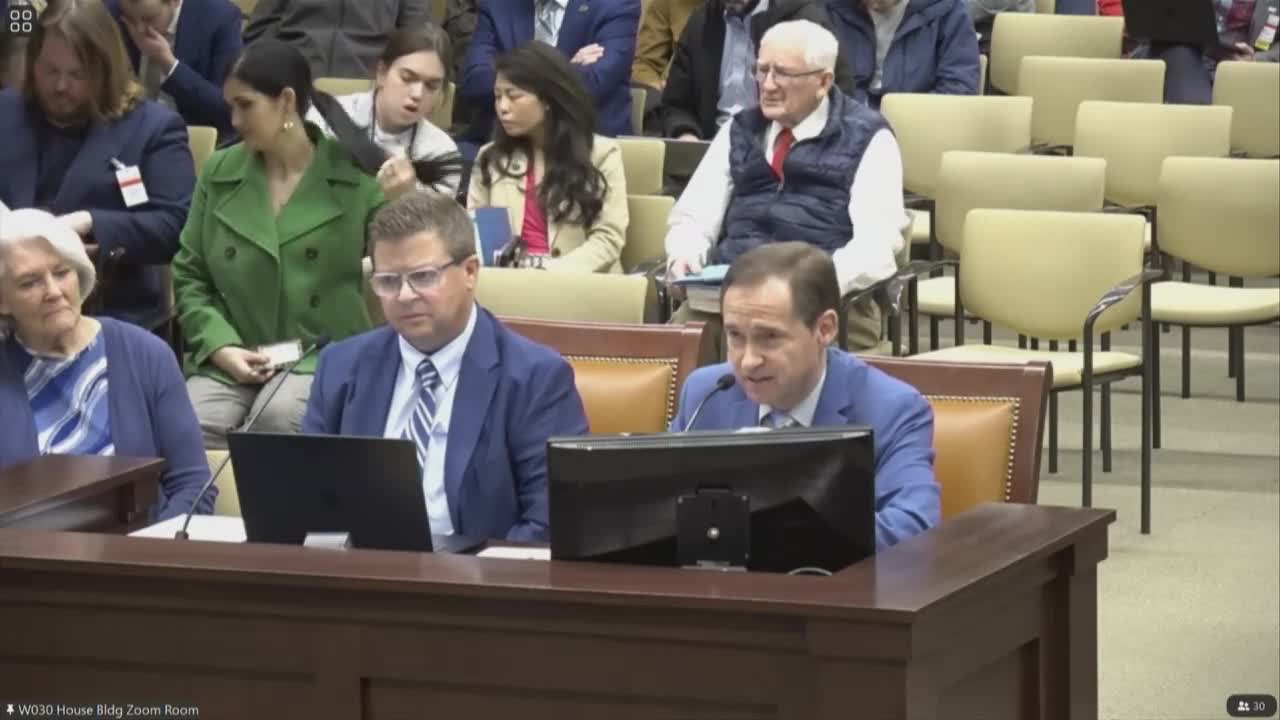West Valley Arts revives Every Brilliant Thing to combat Utah's youth suicide rates
February 06, 2025 | 2025 Utah Legislature, Utah Legislature, Utah Legislative Branch, Utah
This article was created by AI summarizing key points discussed. AI makes mistakes, so for full details and context, please refer to the video of the full meeting. Please report any errors so we can fix them. Report an error »

On February 6, 2025, the Utah State Legislature's Social Services Appropriations Subcommittee convened to discuss critical initiatives aimed at addressing the state's pressing mental health crisis, particularly focusing on suicide prevention efforts. The meeting highlighted two significant programs: a theatrical initiative aimed at fostering dialogue around suicide and the ongoing Live On Utah campaign.
The first topic of discussion centered on a theatrical production designed to engage young audiences in conversations about suicide, a subject often considered taboo. Don Jersey, a former executive at the Utah Shakespeare Festival, emphasized the importance of art in addressing mental health issues. He noted that the play, which had previously been part of the festival's 2019 season, serves as a catalyst for communication about mental health struggles. Jersey expressed a desire to revive this initiative through West Valley Arts, which has recently restructured, to continue the important dialogue around suicide prevention in Utah.
The meeting also addressed the Live On Utah campaign, a comprehensive suicide prevention program that has gained traction since its inception. Funded initially with a one-time allocation of $1 million from the legislature, the program has successfully garnered matching funds from the private sector, demonstrating strong community support. However, concerns were raised about potential cuts to funding sourced from taxpayer contributions designated for suicide prevention. Jeremy Caudle, head of one of Utah's largest psychiatric hospitals, highlighted the campaign's effectiveness, noting a significant increase in public awareness and participation in suicide prevention training. He reported that Utah has seen a decrease in its youth suicide rate by approximately 27% over the past five years, a notable achievement amidst rising rates in other states.
The discussions underscored the critical need for sustained funding and support for mental health initiatives in Utah. As the state moves from having the sixth highest suicide rate to the fourteenth, stakeholders emphasized the importance of maintaining momentum in these efforts. The committee members expressed their commitment to ensuring that these vital programs continue to receive the necessary resources to support Utahns in crisis.
In conclusion, the meeting highlighted the urgent need for ongoing dialogue and funding for mental health initiatives in Utah. As the state grapples with high suicide rates, the revival of artistic programs and the continuation of the Live On Utah campaign represent essential steps toward fostering a supportive community and reducing stigma around mental health discussions. The committee's next steps will involve advocating for sustained funding to ensure these programs can thrive and continue to make a positive impact on the lives of Utah residents.
The first topic of discussion centered on a theatrical production designed to engage young audiences in conversations about suicide, a subject often considered taboo. Don Jersey, a former executive at the Utah Shakespeare Festival, emphasized the importance of art in addressing mental health issues. He noted that the play, which had previously been part of the festival's 2019 season, serves as a catalyst for communication about mental health struggles. Jersey expressed a desire to revive this initiative through West Valley Arts, which has recently restructured, to continue the important dialogue around suicide prevention in Utah.
The meeting also addressed the Live On Utah campaign, a comprehensive suicide prevention program that has gained traction since its inception. Funded initially with a one-time allocation of $1 million from the legislature, the program has successfully garnered matching funds from the private sector, demonstrating strong community support. However, concerns were raised about potential cuts to funding sourced from taxpayer contributions designated for suicide prevention. Jeremy Caudle, head of one of Utah's largest psychiatric hospitals, highlighted the campaign's effectiveness, noting a significant increase in public awareness and participation in suicide prevention training. He reported that Utah has seen a decrease in its youth suicide rate by approximately 27% over the past five years, a notable achievement amidst rising rates in other states.
The discussions underscored the critical need for sustained funding and support for mental health initiatives in Utah. As the state moves from having the sixth highest suicide rate to the fourteenth, stakeholders emphasized the importance of maintaining momentum in these efforts. The committee members expressed their commitment to ensuring that these vital programs continue to receive the necessary resources to support Utahns in crisis.
In conclusion, the meeting highlighted the urgent need for ongoing dialogue and funding for mental health initiatives in Utah. As the state grapples with high suicide rates, the revival of artistic programs and the continuation of the Live On Utah campaign represent essential steps toward fostering a supportive community and reducing stigma around mental health discussions. The committee's next steps will involve advocating for sustained funding to ensure these programs can thrive and continue to make a positive impact on the lives of Utah residents.
View full meeting
This article is based on a recent meeting—watch the full video and explore the complete transcript for deeper insights into the discussion.
View full meeting

